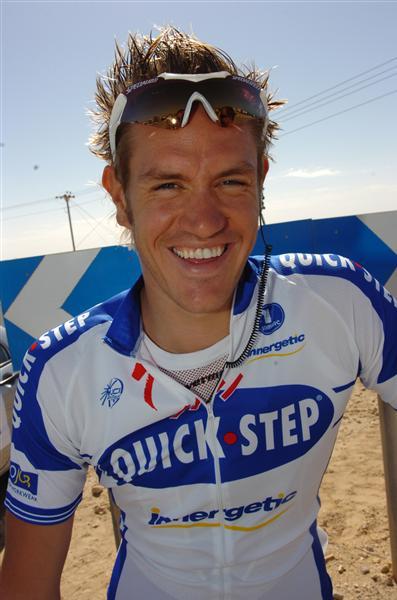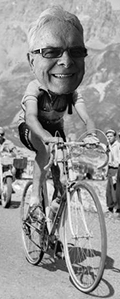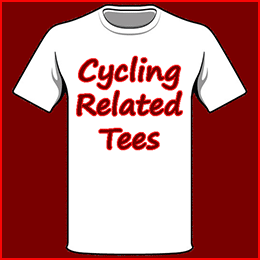Pro Cycling and Helmets
 Tue, June 21, 2011
Tue, June 21, 2011  With the tragic death of Belgian professional cyclist Wouter Weylandt (Left.) in this year’s Giro d’Italia.
With the tragic death of Belgian professional cyclist Wouter Weylandt (Left.) in this year’s Giro d’Italia.
Then just last week Columbian rider Juan Maurcio Soler was left with serious head injuries after a crash in the Tour of Switzerland.
I am wondering just how much protection does a cycling helmet really give?
The helmet rule for professional cyclists was brought by the UCI in 2003 following the death of Andrei Kivlev during the Paris-Nice race.
Since then deaths of professional cyclists while racing have doubled, so where is the protection that helmets are supposed to give a rider?
According to these figures, in the decade that was the 1950s, 8 pro riders were killed while racing. In the ten years that followed, the 1960s, 4 lost their lives; another 4 during the 1970s, and 5 in the 1980s. 3 died in pro races in the 1990s.
However, in the first decade of the New Millennium, the 2000s, 10 professional cyclists died during completion. Two have died already in this decade when we are only half way through the second year. What happened? Helmets were made mandatory in 2003 to protect riders.
Two of the riders, Brett Malin (2003) and Bob Breedlove (2005) died while riding in the Race Across America (RAAM) and were struck by motor vehicles, not by a fall usually associated with racing. But eliminating these two from the list still leaves 8, double the number that died each decade in the preceding 40 years.
I never really considered Professional Cycle Racing to be a particularly dangerous sport, but close to one death a year is not acceptable. Isn’t it about time the UCI and the professional cyclists themselves started to look into the effectiveness of helmets?
The UCI is quick to enact regulation for every other aspect of the sport, why not do something really useful and set some safety standards for bicycle helmets that would benefit us all.
It seems to me that there is too much emphasis on the part of manufacturers in designing something that looks cool rather than do what it is supposed to do, and that is protect a rider in the event he or she should hit their head.
I see two main problems; the outer shell is weak so it splits open on impact, and the polystyrene foam is too dense, it doesn’t absorb the impact. After all it is the helmet that is supposed to get crushed in a crash, not the rider’s skull.
Maybe this is part way to finding the answer.


























Monday Musings
The 98th Tour de France is under way; that is well over a 100 years this event has been run because the only thing that stopped it was two World Wars.
Cindy Boren writing in the Washington Post seems to think there will be a void in this year’s event caused by the absence of Lance Armstrong.
That is hilarious. The Tour de France is a true international race, and one of the biggest sporting events in the world; larger than any one single rider, even one who has won the event a record seven times.
This is the problem with many American sports writers and pundits, they think if it isn’t an American sport, or there isn’t an American winning the event it isn’t worth considering.
The National Championships of some American sports are called “World” Series or “World” Championships. It is like saying we will call it a World Championship, but we will not invite other nations 'cos it's our ball, and our game, and they wouldn't win anyway.
Strangely Cindy Boren ignores the fact that there are other Americans riding in this year’s TDF, and two of them Chris Horner and Levi Leipheimer (Above.) have the potential to do quite well.
But of course Cindy Boren like most Americans only knows of one cyclist... Lance Armstrong
-------------------------------------------------------------------
The next time you hear that tired old argument that cyclists should be licensed and bicycles should be taxed; ask this: Who will issue these licenses and collect these taxes?
The answer will probably be the DMV. That is the Department of Motor Vehicles; with the emphasis on “Motor.” However, a bicycle doesn’t have a motor. End of argument.
-------------------------------------------------------------------
They have also gone one step further and brought in a “Due care” law.
This means a driver won’t be able to hit a cyclist or pedestrian and go, “Whoops, sorry I didn’t see them.” Penalties if someone dies include a $500 fine, just under a year in jail, and driver’s license suspended for a year.
Many will say this does not go far enough for the loss a human life, but it is a good start; more than some other states are doing.
One commenter on my last post suggested the “3 foot passing sign” should be added to the “Share the road” signs; I think that is an excellent idea, actually I think it should replace the Share the road sign.
“Share the road” is so wimpy, it is like asking “Pretty please, let me ride my bicycle on your road.” I notice too that the 3 ft. passing signs also say “Please,” in most cases..... Why? I agree it is nice to be polite, but we don’t have “Please” on speed limit signs.
If something is a law it is not an option. The words "Share" and "Please" imply that one can say "No." Drop the “Please,” and the sign will say “Cyclists have a right to be here, give them at least three feet when you pass because it is a law.”